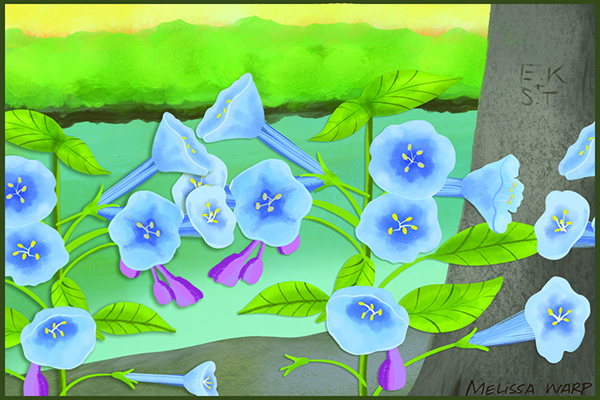Bluebells and paw-paws

Nature is a fine caretaker, indeed
A rite of spring for me each year is traipsing along the remnant of an old wagon road to all that’s left of what once was someone’s farm beside the river.
My name may be on the deed, but the place of just under 30 acres “more or less” doesn’t really belong to me. It belongs mostly to the Salt River that divides it nearly in half, and to the trees, fallen logs and wildflowers, birds and animals that have taken control since a long-ago family gave up farming there. All that is left of their passing is a crumbling section of stone fence, an abandoned tobacco barn, some lonely daffodils and the initials that two unknown sweethearts carved on a beech tree.
Nature has reclaimed this place to suit itself, never bothering to discuss it with me, or even to acknowledge my occasional visits. And nature is proving to be a better caretaker than I have been.
One spring some years back, I noticed a few scattered clumps of bluebells blooming on a wooded slope just below the road. The next spring there were more, and the next even more, until now they bloom in profusion along a stretch of maybe 30 yards below the road.
Where they came from I don’t know. I have been up and down the river on foot for several miles over the years and scarcely remember ever seeing a bluebell, much less a natural garden of them that gets bigger each spring.
A small forest of paw-paw trees—maybe more than a hundred—has taken root along 50 yards of the road. There must be something about the forest floor, the sunlight and north-facing slope in that one spot below the river bluff that makes everything just right for bluebells and paw-paws.
Finally, under the hood of my old tractor inside the weathered barn, I am greeted most every spring in recent years by a field mouse that scurries from a cozy nest in the space between the grill and the radiator, jumps onto an axle and vanishes into some bales of straw.
Her nest is usually a bit larger than a softball. It is made of bits of grass, what looks like stuffing from a cushion, and almost always at the heart of the nest, some soft moss and one tiny bit of bright red cloth. The first time I saw it, I thought the little fragment of crimson cloth must have been an accidental find. But I dispose of the nest each year before starting the tractor, and a new bit of the same red cloth appears the next spring. I can’t imagine where she finds it, or even that she is the same mouse.
It is a puzzle to ponder walking back to my truck on the old wagon road, leaving behind the river, the bluebells, paw-paw trees and a field mouse with an eye for decorating—on that little clump of earth that now is more theirs than mine. KL

